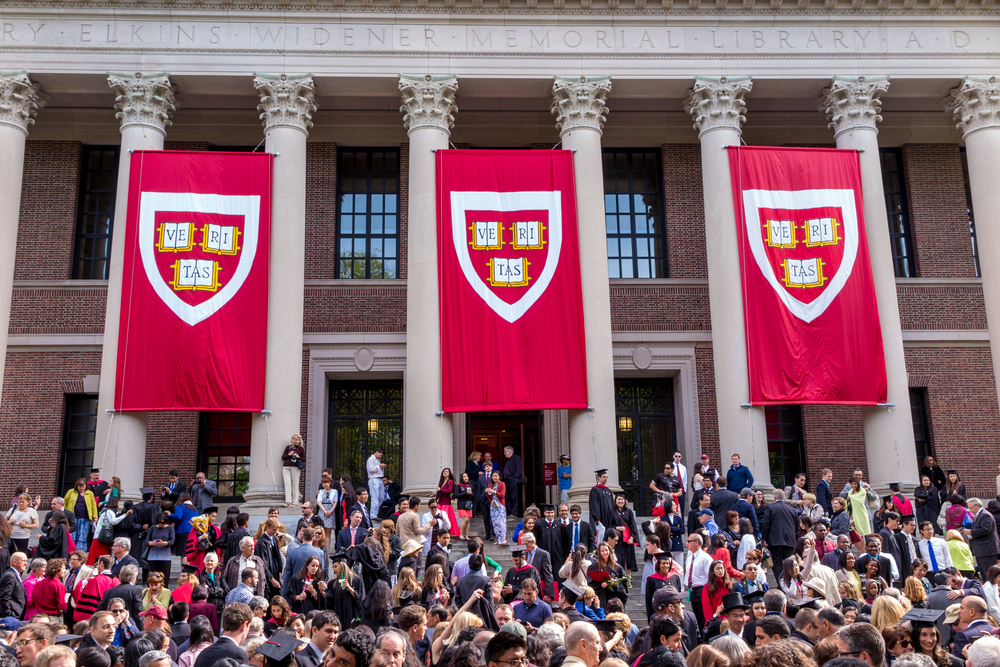
CREDIT: Shutterstock/f11photo

Racial diversity in higher education yields transformative benefits for students and for society. For the past four decades, American colleges and universities have considered an applicant’s race as part of a holistic admissions evaluation process to create these diverse campuses. On October 31st, however, the U.S. Supreme Court will hear oral arguments in challenges to Harvard College’s and the University of North Carolina’s race-conscious admissions practices.
If the petitioners convince this radically conservative Court to overrule 40 years of precedent and outlaw race-conscious admissions in higher education, the consequences for both students and the nation at large will be monumental.
Pitting Marginalized Communities Against Each Other
Students for Fair Admissions (SFFA), the petitioner in both cases, is an organization founded by the conservative activist Edward Blum, who has spent his entire career undermining civil rights protections for marginalized communities. Blum has already tried to attack affirmative action on college campuses, recruiting a white woman to sue the University of Texas twice on the basis of racial discrimination against white applicants. The Supreme Court was not convinced and upheld the constitutionality of affirmative action in higher education in both Fisher I (2013) and Fisher II (2016).
After failing to sway the Supreme Court that affirmative action unconstitutionally discriminates against white applicants, Blum tried a new tactic: have Asian Americans challenge other underrepresented minorities. SFFA claims that Harvard and UNC discriminated against Asian-American applicants by utilizing a race-conscious admissions process. This distorted narrative paints a false picture of the Asian-American community, when in fact 69 percent of Asian Americans favor affirmative action according to the 2022 Asian American Voter Survey.
In both the Harvard and UNC cases, the district courts held, after an exhaustive review of the facts, that the universities squarely followed the law in their admissions practices and that there was no evidence of harm based on the data. There was no statistically significant evidence of discrimination against Asian-American applicants and thus no foundation to Blum’s cases. Although courts of appeals typically do not conduct fact-finding investigations, the Supreme Court could re-examine these facts as it has in other important cases.
Race-Neutral Systems: Negative Consequences for All Students
SFFA seeks to challenge the entire system of race-conscious admissions as unconstitutional and replace it with a “race-neutral” or “colorblind” admissions process. While a race-neutral college admissions process might sound innocuous, the broad negative impacts of such a policy are clear.
Research shows that race-neutral college admission processes result in less diverse student bodies, robbing all students of the proven academic and social benefits of diversity. Specifically, the more diverse a campus is, the more it reduces the influence of discrimination and prejudice that can be barriers to minority students’ academic success. Likewise, such processes prevent systemically disadvantaged minority populations from having access to higher educational opportunities. In other words, fewer students of color will get to go to college and those who do will face greater challenges to success.
In some cases, students of color could be forced to hide their race or ethnicity, an unworkable and downright dehumanizing prospect. How could a student audition for a university’s dance program without revealing their skin tone? Would a Black student be prohibited from writing about overcoming racial discrimination in their Common Application essay? Would a Native American applicant have to avoid mentioning life on the reservation? Would Latinx students have to censor their Spanish surnames? The list goes on. Considering race as one factor in admissions captures the complete identity of a student’s background, qualifications, and capacity to contribute to campus and society at large. Applicants of color have unique perspectives that should be celebrated, not censored.
Further, diverse student bodies benefit all students. As supporters of affirmative action point out in their amicus briefs in these cases, scientific research shows that diversity enhances students’ critical thinking, information processing, and problem-solving skills. Additionally, according to the Court’s own opinion in Fisher II, racial and ethnic diversity “promotes cross-racial understanding, helps break down racial stereotypes, and enables students to better understand persons of different races.” Crucially, as the Court explains in its landmark affirmative case, universities have a compelling interest in maintaining a diverse student body because the nation’s future “depends on leaders trained through wide exposure to the ideas and mores of students as diverse as this Nation of many peoples.”
Race-neutral approaches would not achieve the comparable benefits of providing students with a diverse learning environment reflective of our society, thus harming the learning environments and forcing identity erasure among applicants of color. All the research shows that it will be close to impossible for academic institutions that still value diversity to form a diverse student body with a race-neutral admissions process.
Some argue that a race-neutral system should require that admission be based on test scores alone, despite studies that show how standardized test scores are most strongly correlated with socioeconomic factors and are not predictive of college success. Others argue that the admissions system should be class-conscious instead of race-conscious despite robust evidence that shows how a class-conscious approach fails to achieve the same levels of racial diversity.
Ultimately, if college and university admissions processes are going to include any qualitative metrics, such as admissions essays or alumni interviews, a race-neutral approach would require college admissions officers to purposefully avoid taking the race or ethnicity of the applicant into account as they evaluate applications. As the district court explains in the Harvard case, disregarding considerations of race and ethnicity from Harvard’s admissions process entirely would deprive applicants of color “of their right to advocate the value of their unique background, heritage, and perspective and would likely also deprive Harvard of exceptional students who would be less likely to be admitted without a comprehensive understanding of their background.”
The bottom line: All students will be harmed and fewer students of color will have access to the benefits of higher education should universities no longer consider race as a factor in admissions. If the Supreme Court refuses to uphold affirmative action, it will be wittingly undoing decades of progress for racial equality and inclusion.
Jeevna Sheth is a Dorot Fellow at Alliance for Justice.
